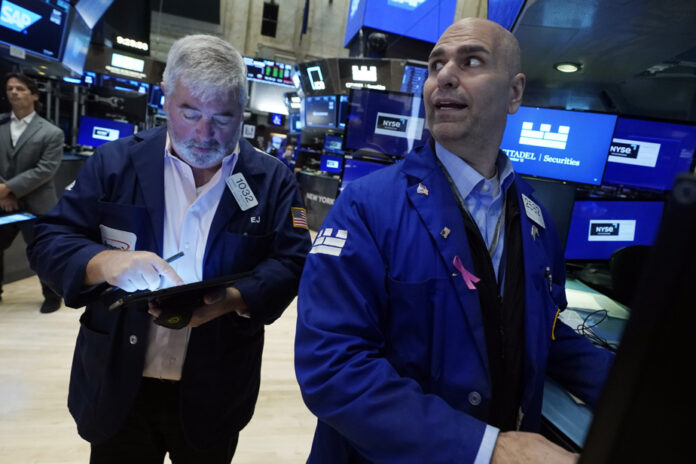(New York) The New York Stock Exchange ended in the green on Thursday, rather well placed by the day’s economic indicators, then encouraged by the success of the largest IPO in almost two years.
The Dow Jones gained 0.96%, the NASDAQ index rose 0.81%, and the broader S index
The start of the session consisted of digesting a flurry of economic data in the United States, published before the stock market.
U.S. retail sales in August climbed 0.6% month-on-month, far more than the 0.1% that economists had predicted, a boost mainly attributable to soaring oil prices.
“It was a positive” for stocks, said Art Hogan of B. Riley Wealth Management.
Excluding energy, automobiles, construction and food, consumption, retail sales were up 0.1%, compared to an anticipated contraction of 0.1%.
On the jobs side, new unemployment claims only increased slightly last week, to 220,000, compared to 225,000 anticipated.
The downside came from the producer price index PPI, or wholesale prices, up 0.7% month-on-month, more than the 0.4% expected by economists.
However, the index excluding energy and food only reached 0.2%, like the previous month and in line with forecasts.
“Inflation is still moving in the right direction,” according to Art Hogan. The deceleration “isn’t going to be linear, but things are getting better. »
Added to this was the first listing of Arm, a specialist in the design of microprocessors, whose stock immediately took off, gaining 30% compared to the price set the day before the IPO.
The stock ended up 24.69%, a success for this operation which constituted a major test for Wall Street, valuing Arm some 65 billion dollars, and even 67.9 counting the shares granted to employees and directors .
“It’s been 18 months since we had a real introduction, and it’s a success,” summed up Art Hogan.
“I think we’ve started something”, a new stock market cycle, after several gloomy weeks, argues the analyst, who compared this upsurge to that of August, during which the market suffered in the first half before to raise your head.
“We are not going to set records, but I think this is the end of the refrain of fears” regarding the economic situation and inflation.
Despite the acceleration in producer prices, the bond market only reacted marginally. The yield on two-year U.S. government bonds stood at 5.01%, up from 4.96% at Wednesday’s close.
On the market, a few hours before a possible strike by employees members of the large union UAW (United Auto Workers), General Motors (-0.12%), Stellantis (-0.58%) and Ford (-1.00 %) took out the umbrella.
After American Airlines and Spirit Airlines on Wednesday, Delta (-0.56%) in turn issued a profit warning on Thursday due to the increase in the price of kerosene.
After ten difficult days, Apple attempted a rebound and gained 0.88%, after a denial from the Chinese authorities concerning the ban, reported by several media, on iPhones in several government agencies.
HP was sanctioned (-1.80%) after the publication of a stock market document indicating that Berkshire Hathaway, the holding company led by Warren Buffett, sold some 5.5 million shares of the computer manufacturer, of which it nevertheless retains another 115 million shares.
The Toronto Stock Exchange closed with a gain of nearly 300 points on Thursday, benefiting from a broad-based rally fueled by stocks in the base metals sector and rising crude oil prices.
The composite index S
On the currency market, the Canadian dollar traded at an average rate of 73.99 US cents, up from 73.80 US cents on Wednesday.
On the New York Mercantile Exchange, the price of crude oil rose US$1.64 to US$90.16 per barrel, while natural gas rose 3 US cents to US$2.71 per barrel. million BTUs.
The price of gold rose 30 US cents to US$1,932.80 per ounce and copper rose 3 US cents to US$3.82 per pound.















